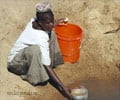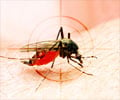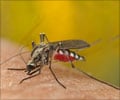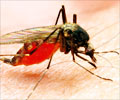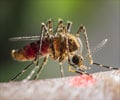How can I reduce the risk?
You shouldn't allow water to stagnate, as this forms a breeding ground for malaria's deadly carriers, the Anopheles mosquito. At community level water shouldn't be allowed to stagnate and whenever feasible, water should be drained. For efficient control, spraying can be undertaken using pesticides by certified authority. At home, you should change water in flower pots, buckets, coolers etc. at least twice a week. Ventilation of socket outlet pipes should be properly covered with nets. Mosquito nets and door screens also help. But these methods are not convenient. Mosquito repellants like mats, coils, refills, etc., should be used regularly to keep mosquitoes away.
Warding off & minimisation of exposure to mosquitoes
- Avoidance of night-time outside activities.
- Avoid dark coloured clothing as it attracts mosquitoes. Some perfumes, cologne and aftershave are also reported to attract.
- Clothing to cover arms and legs in the evenings as mosquitoes prefer the leg ankle region.
- Spend time in air-conditioned offices and hotels that are generally free from mosquitoes.
- Use mosquito bed nets if sleeping in unscreened rooms or open spaces.
- If mosquitoes are present in an otherwise screened room, spray with insecticide.
- Use reliable mosquito repellents:
Use a dependant insecticide aerosol in the room to kill mosquitoes before retiring.
Use knock down sprays.
Use mosquito coils or vaporising mats.
Use electronic repellements.
You cannot depend on medication alone to prevent malaria. Avoidance of bites is the best protective plan. Consistent use of these measures both during day and night will not only prevent just malaria and filaria, but also dengue, a day-time biting mosquito disease. It is advisable to carry some form of mosquito repellent while traveling-: either sprays, creams, lotions, mats or coils.
Malarial control history in India
1946: India started using DDT
1953: NMCP is started
1958: NMCP becomes the NMEP
1959: The first time vector resistance is detected in India (In Gujarat)
1965: Malaria begins to re-emerge
1976: Peak of malaria cases in re-emergence period
1977: India starts MPO and PfPC
1985: 2 million annual cases of malaria in India
1991: Peal of P.falciparum cases
1994: Large scale epidemics, primarily in eastern India and western Rajasthan.
Control of mosquito borne diseases
- Population shift from rural to urban areas
- Improved housing and nutrition
- Better socio-economic conditions
- Better living standards
- Improved surveillance has allowed treatment of parasitemic persons
- Screening of houses
- Insecticide spraying by certified authority.
- House spraying (residual insecticide- spray programme)


